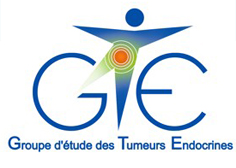PROSPECTIVE STUDY EVALUATING THE MEDULLARY THYROID CANCER MANAGEMENT’S CARE USING PET F-DOPA
- Type d'étude :
- Interventionnelle (essai clinique)
- Promoteur :
- Institut Claudius Regaud - Toulouse
- Etat actuel de l'étude :
- En cours de recrutement
Prospective Study Evaluating the Medullary Thyroid Cancer Management’s Care Using PET F-DOPA in Patients With a High Level of Postoperative Residual Thyrocalcitonin (CMTpostopFDOPA)
NCT02856347
Toulouse, Institut Claudius Regaud
MedullaryThyroid Cancer
Imagerie diagnostique
Bordeaux, Limoges, Marseille, Montpellier, Toulouse
The purpose of the study is to evaluate the impact and performance of a new PET / CT (computerized tomography ) tracer targeting dopamine receptor in patient with residual ganglionar biological disease after initial surgery of medullary thyroid cancer compared to standard imaging.
Relative rate of TRUE positive nodes with PET F-DOPA compared to standard imaging assessment. [ Time Frame: up to 3 years ]
• Age > or = 18 years.
• Patient with medullary thyroid cancer (sporadic or hereditary form).
• Patient treated by total thyroidectomy with uni or bi-lateral lymph node dissection (in the central and/or lateral neck compartment).
• Patient with elevated thyrocalcitonin rate > or = 150 pg/ml assessed within 6 weeks or more after surgery.
• Patient with standard imaging assessment performed during 3 months before PET 18-FDOPA.
• Standard imaging assessment including at least a cervical ultra-sound, a cervico-thoracic CT-scan and/or a cervico-thoraco-abdomino-pelvic CT-scan and a liver MRI.
• Patient able to be followed at least 6 months after PET 18-FDOPA.
• If women are breastfeeding, nursing should be discontinued during 24 hours after PET 18-FDOPA.
• Patient must provide written informed consent prior to any specific procedure or assessment.
• Patient must be affiliated to the French Social Security System.
• Pregnant patient.
• Post-operative radiotherapy initiated before PET 18-FDOPA.
• Patient with PET 18-FDG performed within 24 hours before PET 18-FDOPA.
• Participation in any other clinical trial for therapeutic use.
• Patient with PET / CT-scan exam contra-indication.
• Any serious and/or unstable pre-existing psychological, familial, geographic or social condition that could interfere with medical follow-up and compliance to study procedures.
• Patient protected by law.
